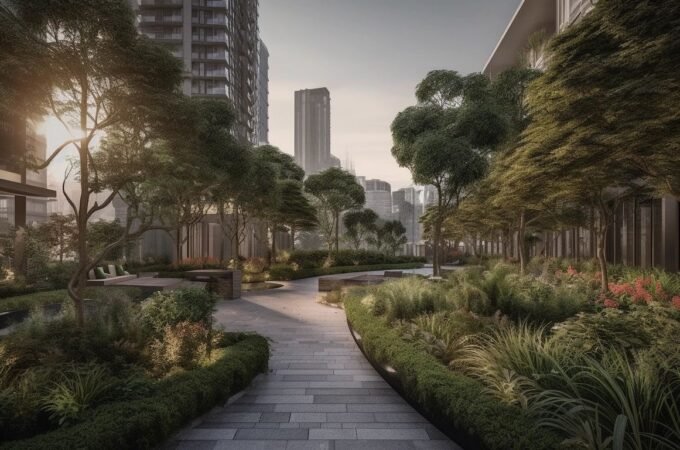
Passive Cooling Home Design: A Smarter Way to Beat the Heat
As temperatures and energy costs rise, passive cooling home design offers a smart, eco-friendly way to stay comfortable. Reducing reliance on AC lowers bills and improves indoor air quality. Whether building new or upgrading, passive design brings lasting comfort and savings.
What Is Passive Cooling?
Passive cooling uses architectural design, natural ventilation, and building materials to reduce indoor temperatures without using energy-intensive systems. Instead of cooling your home with AC units or fans, passive cooling works by maximizing natural airflow, shading, and insulation.
These techniques harness the natural movement of air, the position of the sun, and the properties of building materials to keep indoor spaces cool, even in hot climates.
Key Principles of Passive Cooling
Passive cooling is based on several core design strategies that work together to maintain comfortable indoor temperatures:
- Orientation and Layout
Proper building orientation is the foundation of passive cooling. Homes should be oriented to minimize direct sun exposure during the hottest parts of the day. For example, in most climates, placing living areas on the north side (in the northern hemisphere) and minimizing west-facing windows can help reduce heat gain.
- Natural Ventilation
Encouraging cross-ventilation is a key component. Strategically placed windows, vents, and open floor plans allow fresh air to flow through the home, removing heat and improving air quality. Higher openings like clerestory windows or roof vents can release hot air, while lower ones bring in cooler air from shaded areas.
- Thermal Mass
Materials such as brick, concrete, or stone absorb and store heat during the day and release it at night when temperatures drop. This process helps regulate indoor temperatures and prevents overheating during peak hours.
- Shading and Overhangs
External shading devices like overhangs, awnings, pergolas, and trees can significantly reduce solar heat gain. Properly designed window overhangs block high summer sun while allowing low winter sun to warm the home, supporting year-round energy efficiency.
- Insulation and Airtightness
Good insulation keeps homes warm in winter and cooler in summer. Insulating walls, roofs, and floors and sealing gaps can reduce unwanted heat infiltration and retain cool air longer.
Benefits of Passive Cooling Design
Adopting passive cooling techniques has various advantages for homeowners and the environment.
Energy Savings
Because passive cooling reduces or eliminates the need for air conditioning, it can significantly lower energy bills—especially during peak summer months.
Environmental Impact
Less reliance on mechanical cooling means fewer greenhouse gas emissions and a smaller carbon footprint. Passive cooling is a sustainable choice that supports climate-conscious living.
Comfort and Health
Natural ventilation improves indoor air quality by reducing humidity, pollutants, and airborne irritants. Homes designed for passive cooling are also less prone to temperature swings, making them more comfortable.
Durability and Low Maintenance
Unlike air conditioning systems that require regular maintenance and repairs, passive cooling relies on your home’s design and natural forces, resulting in fewer mechanical issues and long-term durability.
Passive Cooling Techniques You Can Apply
You don’t need a new build to benefit from passive cooling—simple updates can help. Install operable windows on opposite walls for cross-ventilation, use light-colored roofing to reflect heat, and add external shading like awnings or shutters. Plant shade trees or vines on sunny sides, switch to breathable window coverings and seal gaps while insulating walls and ceilings to reduce heat gain.
Considerations for Different Climates
Passive cooling should match your local climate. Hot, humid areas need shade and airflow; dry regions benefit from thermal mass and insulation; mixed climates require a balance of both. Consult a local architect or builder familiar with passive design for best results.
Future-Proof Your Home with Passive Design
As energy regulations become stricter and sustainability becomes more important, passive cooling home design offers a timeless solution. Whether you’re motivated by cost savings, environmental values, or long-term resilience, passive design principles can make your home more livable—and valuable.
With careful planning and thoughtful upgrades, you can reduce your reliance on mechanical systems, improve comfort, and contribute to a more sustainable future.






